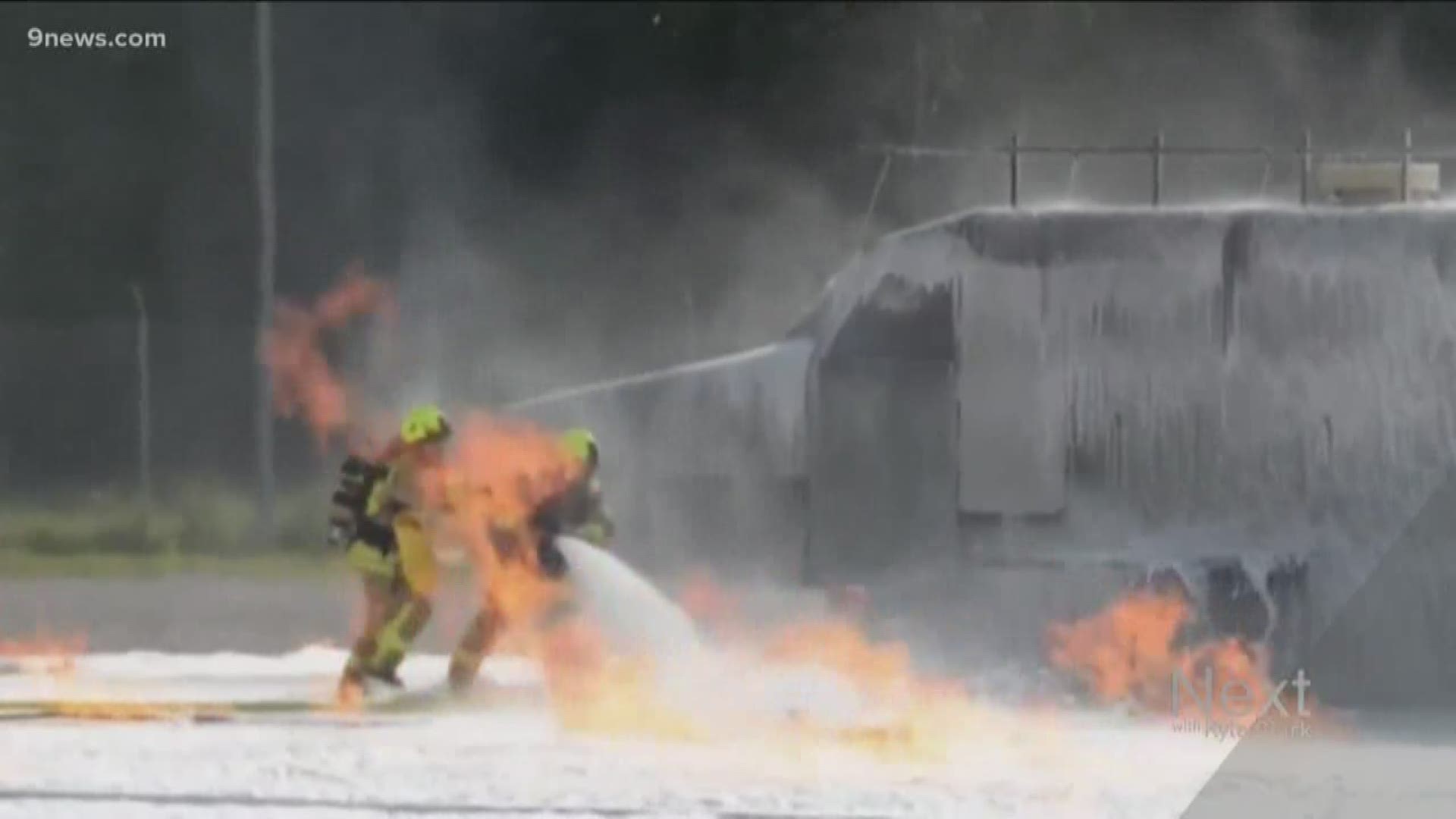DENVER — When firefighters working with departments like South Metro return to the station after a call, they are quick to wash their gear and change out of it.
Toxins called Fluoroalkyl and Polyfluoroalkyl substances, known as PFAS chemicals, are found in firefighting foam and commonly used in the gear for water resistance and heat protection.
Wearing filthy gear after a fire used to be a badge of honor. Now, it's known that habit keeps these carcinogens close to the skin, so firefighters are washing them off as soon as possible.
Our reporting on PFAS, the ongoing studies looking at their relation to cancer, and the death of Troy Jackson, South Metro's former operations chief who spent his final years educating the department about the invisible dangers of the job, prompted a Next Question from a viewer named Arlyce:
“What happens to the carcinogens that are washed off the turnouts of the firefighters?”
The Colorado Department of Public Health and Environment (CDPHE) suggested thinking of it like washing your car. Spokesperson MaryAnn Nason told us this via email:
When firefighters wash off equipment outside, then those PFAS chemicals can make their way through our stormwater system to surface waters like lakes, streams and groundwater. If equipment is washed off indoors, then those chemicals would most likely make their way through the sanitary sewer to the wastewater treatment plant and ultimately into creeks, streams, or groundwater. The amount of PFAS chemicals that are washed off from equipment is substantially lower compared to the amount of Class B firefighting foams that might be used on fuel related fires (e.g. oil tank fires) and left on the ground and that could make their way into water supply. Even still, the department is committed to learning more about the extent of contamination which is why we will be testing surface water.
In general, this is what happens to any pollutant that might be washed off any item. Let's say the fire equipment had dirt on it, and you wash it off outside, it would go to the stormwater system. If you wash off the dirt indoors, it would likely go through the sanitary sewer system. Another example would be a car. If you wash your car outside, the soap you might use will go to the storm sewer system. If you wash it at a car wash, that car wash might have a wastewater system that takes that soap to a wastewater plant.
The testing Nason mentioned is just getting started in Colorado.
CDPHE recently received $500,000 in funding from the state legislature, so that PFAS levels might be tested in public water systems. In Colorado, 94 systems have tested positive for the chemicals since 2012, the department said, but the state is not aware of public drinking water with levels above the federal advisory limit (70 parts per trillion).
Though, the state said, some smaller systems may not have ever been tested.
"This group of chemicals called PFAS represent a health risk in the state, and so we want to help public drinking water systems and their communities learn if they’re at risk," Ron Falco, the drinking water program manager with CDPHE said. "Most small communities in the state have not tested for these unregulated chemicals."
His program has reached out to 890 water systems statewide. Each system is eligible to receive a sample test kit. If money remains after the $500,000 is spent, the kits will be offered to owners of private wells, too.
Results will be available to the public.
Some parts of Colorado, like Denver, get their water from mountain snowmelt. The tests will be more indicative of conditions in towns that rely on wells, for example.
The state plans on using all the money for tests in the next six months.
Under a new state law, HB19-1279, CDPHE was also scheduled to begin surveying fire departments in Colorado last fall about their use of PFAS.
Have a question about something that you'd like Next to answer? Email Next@9news.com.
SUGGESTED VIDEOS | Full Episodes of Next with Kyle Clark

